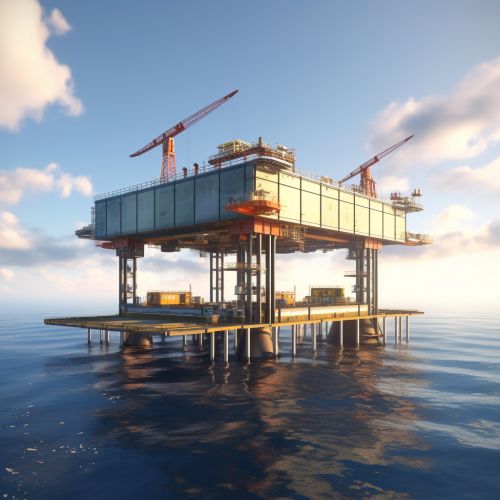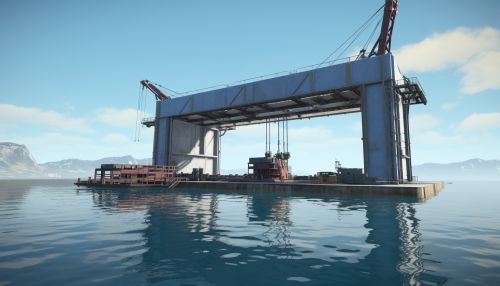Floating Caisson
Introduction
A floating caisson, also known as a floating dock, is a watertight structure or chamber used in construction work underwater, to repair ships, or to carry out the construction of bridges and piersBridge and Pier Construction. The term "caisson" comes from the French word "caisse," meaning box. The floating caisson is a modern marvel of engineering that has revolutionized marine and underwater construction.
History
The concept of the floating caisson was first introduced in the 19th century. The first known use of a caisson for construction purposes was by French engineer Triger who used it to build the foundations for a lighthouse. The use of caissons spread rapidly throughout the engineering world, and they were used in the construction of many famous structures, including the Brooklyn Bridge in New York CityBrooklyn Bridge Construction.
Design and Construction
The design and construction of a floating caisson are complex processes that require a deep understanding of engineering principles and the physical properties of water and air. The caisson is usually built on land and then floated to the construction site. Once in place, it is filled with water to sink it to the required depth. After reaching the desired depth, the water inside the caisson is replaced with air, creating a dry working environment underwater.
The size and shape of a floating caisson can vary greatly depending on its intended use. In general, however, all caissons have a similar basic design. They are typically rectangular in shape and are made of steel or concrete. The walls of the caisson are thick and strong to withstand the pressure of the water and the weight of the materials and equipment inside.
Uses
Floating caissons are used in a variety of construction projects, both on land and underwater. They are especially useful in the construction of bridges and piers, where they can be used to create stable, dry foundations in bodies of water. They are also used in the repair and construction of ships, where they can provide a dry environment for workers to carry out repairs or construction work below the waterline.
In addition to their use in construction, floating caissons are also used in the oil and gas industryOil and Gas Exploration and Production. They are used to create dry environments for the construction of offshore oil and gas platforms, and for the repair and maintenance of these structures.
Advantages and Disadvantages
Like all engineering solutions, floating caissons have both advantages and disadvantages. One of the main advantages of using a floating caisson is that it allows for construction work to be carried out underwater in a dry environment. This can significantly speed up the construction process and reduce costs.
However, there are also disadvantages to using floating caissons. One of the main disadvantages is the risk of decompression sickness (also known as the bends) for workers who spend long periods of time in the pressurized environment inside the caisson. This is a serious condition that can be fatal if not treated promptly.


